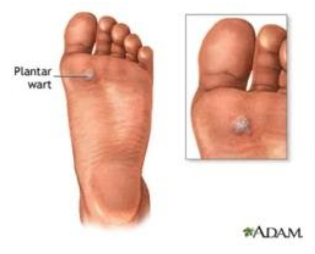Plantar warts arise from direct contact with a strain of human papilloma virus (HPV)
You may recognize HPV as the virus commonly associated with cervical cancer and genital warts. However, there are more than 100 types of HPV, some of which can cause plantar warts.
Once a plantar wart has developed, it can spread in several ways. Untreated plantar warts can spread on their own into wart clusters or grow to an inch (2.54 centimeters) or more in circumference. A person with plantar warts also can spread them to other areas of the foot by scratching or touching the wart. In addition, contact with any skin or blood shed from the wart may cause other warts to develop.
Plantar Wart Removal Surgery
If every other treatment fails and you’re still troubled by painful plantar warts, surgery is needed. With surgery, there’s always a chance for scarring, which is why it’s a last resort for removing plantar warts.
What to expect
The specialist will clean the area, inject a numbing medication, cut out the wart then close the wound. The whole session takes about 15-30 minutes.
Is wart excision painful?
The procedure itself is painless because of the numbing medication, but the site will feel tender for a couple of weeks. You may need pain medications after your session.
Downtime
Recovery from wart excision depends on the lesion’s size, shape and location. You may be advised to avoid strenuous activities for 2-4 weeks to avoid trauma to the site. You may use crutches to relieve the pressure from plantar excisions.
Aftercare
The specialist will advise you about proper wound care. Call your health practitioner if you experience severe pain, bleeding, and fever, or if the site develops signs of infection.

